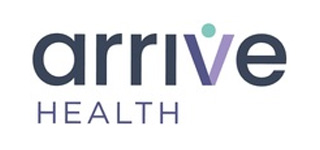Optimizing operating room performance is a tough nut to crack for hospitals because true OR capacity is often uncaptured and underutilized due to rigid scheduling protocols.
During a workshop sponsored by LeanTaaS at the Becker’s Hospital Review 9th Annual CEO + CFO Roundtable in November, Sanjeev Agrawal, president and COO of LeanTaaS, and Matt Ruby, director of business operations, surgical services at Northwestern Memorial Hospital in Chicago, discussed challenges and available solutions related to efficient OR utilization.
Four key takeaways:
1. Unused OR capacity leads to unrealized return on investment. The OR represents the economic backbone of hospitals but is often underutilized because of the rigidity of block scheduling and the limited use of real-time data. Despite enormous investments in EHRs, OR schedulers still lack access to relevant metrics that would enable them to plan OR use more efficiently.
2. Common OR capacity transformation goals point to the need for better utilization of data. The common denominator for ORs’ capacity problems is a mix of operational issues: lack of access to OR time due to inefficient management of block releases, flawed one-size-fits-all logic of block utilization, and an abundance of reports and dashboards that yield only retrospective data.
Recognizing the need to overhaul OR scheduling and data management, health systems have identified the following six essential transformational goals:
– Growth and market competitiveness by improving the system’s ability to attract and absorb more volume and getting a higher share from “splitter” surgeons by being easier to do business with
– Improving OR utilization
– Enabling “system-ness” through automation and a systems view of analytics
– Better visibility and transparency by fostering a data-driven culture and decision-making
– Agility and resiliency to change, move, open and close ORs automatically
– Lowering capital and operational costs
3. Technology can solve these problems by deploying logic used in other industries. LeanTaaS’ iQueue platform is solving these OR problems using three approaches:
a. Leveraging an OpenTable model by creating a marketplace for OR time where block owners can release time weeks in advance based on analytics predicting unused time.
b. Identifying “collectible” chunks of idle time rather than negligible case start delays or turnover times.
c. Proactively alerting of expected OR releases or delays rather than focusing on historical information. Airline notifications about expected flight delays are a useful analogy. “If we can predict case volume next week, not just admire the fact that last week we had a problem, then we can do something about staffing,” Mr. Agrawal said.
4. Hospitals working with LeanTaaS’ solution are seeing positive results thanks to data transparency. Northwestern Memorial Hospital used to track standard OR efficiency metrics, such as on-time starts and turnaround times. When it started working with LeanTaaS, administrators began monitoring how long it takes before surgeons release time blocks and the amount of idle OR time when staff was available.
Since then, Northwestern has saved about 200,000 case minutes beyond its average growth date thanks to the granularity of the data. “We’ve set up iQueue as the single source of truth, which helped us overcome skepticism about the data and improve decision-making,” Mr. Ruby said.
For hospitals and health systems looking to boost OR performance, unlocking hidden time pockets is critical. Data-driven solutions such as LeanTaaS’ OR capacity management software provide the key.



